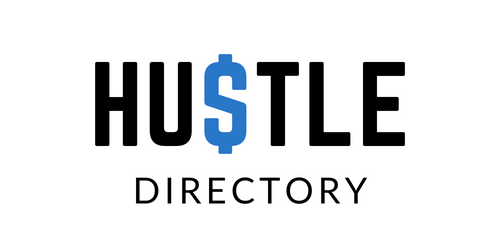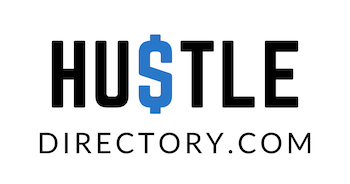Are you wondering what is digital dropshipping and whether it’s the right business model for you? Let’s cut to the chase. Digital dropshipping is an e-commerce model that involves selling digital products you don’t own or create.
Instead, you partner with suppliers or creators who handle the fulfillment and delivery of digital goods directly to customers. It’s a modern way to start an online business without the hassles of inventory management, shipping, or product development.
This article will give you a clear understanding of digital dropshipping, its pros and cons, and the steps to get started in 2023. But be warned, it’s not all sunshine and rainbows; there’s a fair share of challenges and competition in this space.
So, if you’re looking for a no-nonsense guide to digital dropshipping, you’ve come to the right place. Keep reading to determine if this business model is a good fit for your entrepreneurial aspirations.
How Does Digital Dropshipping Work?
Alright, now that you have a clear idea of what is digital dropshipping, let’s dive into how it actually works. In a nutshell, digital dropshipping involves selecting a niche, finding suppliers or creators, setting up an online store, marketing your store, and managing order fulfillment and customer support. Here’s a no-nonsense breakdown of the process:
Selecting a niche for digital products
First things first, you need to find a profitable niche for your digital products. Be warned, this isn’t just about picking something you like, but rather identifying a niche with strong demand and audience willing to pay for digital goods.
Finding suppliers and digital product creators
Once you’ve nailed down your niche, it’s time to hunt for reliable suppliers or creators who offer digital products in that category. Keep in mind, the quality of your suppliers or creators can make or break your business, so choose wisely.
Creating an online storefront
Now that you’ve got your niche and suppliers sorted, you’ll need an online store to showcase and sell your digital products. This is where you’ll make your digital dropshipping store stand out from the competition.
Marketing and driving traffic to the store
No customers, no sales. It’s that simple. So, put your marketing hat on and get ready to hustle. Drive traffic to your store through SEO, content marketing, social media, and other strategies to reach your target audience.
Order fulfillment and customer support
When a customer places an order, the supplier or creator will deliver the digital product directly to the customer, and you’ll earn a commission. This is where the perks of digital dropshipping vs dropshipping come in — no inventory management or shipping hassles for you. But, remember — excellent customer support is still crucial to keep your customers happy and coming back for more.
Now that you know how digital dropshipping works, you can decide if it’s the right business model for you. Be prepared to face challenges and competition, but with determination and a solid strategy, you can make it work.
Weighing the Pros and Cons of Digital Dropshipping
In order to decide if digital dropshipping is the right business model for you, it’s essential to understand both the advantages and disadvantages of this approach. Let’s take an honest look at the pros and cons of what is digital dropshipping.
Advantages of Digital Dropshipping
- Low startup costs: Unlike traditional brick-and-mortar businesses, digital dropshipping requires minimal initial investment. You don’t need to purchase inventory or rent a warehouse, which significantly reduces your startup costs.
- No physical inventory or storage required: One of the most significant benefits of digital dropshipping is that you don’t have to deal with the hassle of managing and storing physical inventory. This means fewer headaches and more focus on growing your business.
- Flexibility and scalability: As your digital dropshipping business grows, you can easily scale your operations without having to invest in additional storage or staff. The digital nature of the products makes it simple to expand your product offerings and reach new markets.
- Wide range of digital products: The digital dropshipping model allows you to choose from a vast selection of digital products, from e-books and courses to software and digital art. This gives you the opportunity to cater to various niches and customer preferences.
- Access to a global market: With digital dropshipping, you can sell your products to customers worldwide without the challenges of shipping physical goods. This allows you to tap into new markets and potentially increase your revenue.
Disadvantages of Digital Dropshipping
- High competition: The low barriers to entry in digital dropshipping mean that you’ll likely face stiff competition. To succeed, you’ll need to differentiate yourself by offering unique products, exceptional customer service, and effective marketing strategies.
- Potential for copyright infringement issues: When dealing with digital products, it’s crucial to ensure that you have the necessary rights and permissions to sell them. Failing to do so can result in legal issues and damage your reputation.
- Supplier reliability and quality control: Since you’re not creating the products yourself, you’re relying on your suppliers to deliver high-quality digital goods. It’s essential to build strong relationships with reliable suppliers and monitor product quality to maintain customer satisfaction.
- Customer service challenges: While digital dropshipping eliminates some of the logistical challenges of traditional dropshipping, you’ll still need to provide top-notch customer service. Addressing customer inquiries, handling refunds, and resolving technical issues are crucial aspects of running a successful digital dropshipping business.
- Potential for lower profit margins: Since digital products can be easily replicated, you may face price competition that can drive down your profit margins. To counteract this, focus on offering unique, high-quality products and providing exceptional customer experiences.
By understanding the pros and cons of digital dropshipping, you can make an informed decision about whether this business model aligns with your entrepreneurial goals and aspirations.
Best Digital Dropshipping Products
As you explore what is digital dropshipping, it’s crucial to understand the types of digital products that perform well in this business model. Here are some of the best products and ideas for digital dropshipping that can help you cater to different customer needs and preferences, ensuring the success of your digital dropshipping venture:
E-learning Courses and Educational Materials

Online learning is booming, and with the increasing demand for knowledge and skills, e-learning courses and educational materials have become popular digital dropshipping products. From language lessons to programming tutorials, there’s an endless array of niches and subjects to cater to.
E-books and Audiobooks
With the growing popularity of e-readers and smartphones, e-books and audiobooks have become go-to digital dropshipping ideas. You can offer fiction, non-fiction, and even niche-specific books to cater to various reader interests.
Software and Mobile Applications
As technology advances, so does the demand for software and mobile apps. Selling software licenses or app subscriptions can be a lucrative digital dropshipping opportunity, as these products cater to both individual users and businesses across various industries.
Stock Photos, Digital Art, and Design Assets
The rise of digital marketing and content creation has led to a surge in demand for stock photos, digital art, and design assets. Dropshipping these products can help you cater to bloggers, marketers, and businesses looking for visual content to enhance their online presence.
Music, Sound Effects, and Audio Assets
Musicians, podcasters, and video creators are always on the lookout for high-quality music, sound effects, and audio assets. By offering these digital products, you can tap into a market with a growing demand for audio content.
Video Games and Virtual Goods

The gaming industry continues to thrive, making video games and virtual goods another lucrative digital dropshipping opportunity. Offering popular games, in-game items, and virtual currency can attract a diverse range of gaming enthusiasts.
Templates and Ready-to-Use Assets
From website templates and presentation slides to social media graphics and resume templates, there’s no shortage of ready-to-use assets that can save your customers time and effort. Offering these products can help you reach a broad audience of individuals and businesses seeking convenience and efficiency.
By focusing on the products that have proven to work in digital dropshipping, you can create a successful business that caters to a wide range of customer needs, ensuring the sustainability and growth of your digital dropshipping venture.
Choosing the Right E-commerce Platform
When diving into what is digital dropshipping, one of the critical decisions you’ll need to make is selecting the right e-commerce platform to host and manage your online store.
There are two main types of platforms relevant to digital dropshipping: those that take care of hosting and payment processing (like Gumroad and Selar), and CMS platforms that you can build and customize yourself (like Shopify, WooCommerce, and ClickFunnels).
Hosted Platforms with Built-in Payment Processing
Platforms like Gumroad and Selar provide an all-in-one solution for digital dropshipping entrepreneurs. They take care of hosting, payment processing, and even some marketing features, making it easy for you to set up and manage your store.
These platforms are typically user-friendly and require little to no technical knowledge. However, they may offer less customization and flexibility compared to CMS platforms.
CMS Platforms for Customization and Control
If you prefer to have more control and customization over your digital dropshipping store, you might want to consider a CMS platform like Shopify, WooCommerce, or ClickFunnels. These platforms allow you to build your store from scratch, giving you the freedom to create a unique shopping experience for your customers.
ClickFunnels, for instance, is known for its powerful sales funnel capabilities, making it an attractive choice for those who want to optimize conversions. However, these platforms may require more technical knowledge and a separate payment processing solution.
When deciding on the right platform for your digital dropshipping business, consider factors such as:
- Your technical skills and comfort level with web development
- The level of customization and control you desire
- Your budget and the costs associated with each platform
- The specific features and tools you need for your store
By choosing the right e-commerce platform that aligns with your goals and preferences, you’ll be better equipped to launch and manage a successful digital dropshipping store.
Tips for Success in Digital Dropshipping
To maximize your chances of success in digital dropshipping, it’s essential to have a strategic approach and make informed decisions. Here are some valuable tips to help you on your journey:
1. Niche Selection
Choose a niche that you’re passionate about and has a sizable target audience. This will make it easier for you to create engaging marketing content and establish yourself as an authority in your chosen niche. Conduct thorough market research to identify potential niches with high demand and low competition.
2. Product Quality and Legality
Ensure that you’re offering high-quality digital products and have the necessary rights and permissions to sell them. Partner with reliable suppliers and creators to maintain a consistent level of quality, and avoid legal issues that may arise from selling copyrighted materials.
3. Building a Strong Brand
Establish a unique and memorable brand identity to differentiate yourself from the competition. Invest in a professional logo, a consistent visual style, and a clear brand message. This will help you build trust with your target audience and create a loyal customer base.
4. Effective Marketing Strategies
Utilize a combination of marketing strategies to reach your target audience and drive sales. This can include content marketing, social media, email marketing, and paid advertising. Make sure to track your marketing efforts and adjust your strategies based on performance data.
5. Customer Service and Support
Prioritize exceptional customer service and support to ensure a positive shopping experience for your customers. Be responsive to inquiries, handle refunds promptly, and provide assistance with technical issues. A satisfied customer is more likely to return and recommend your store to others.
6. Continuous Learning and Improvement
Stay informed about industry trends, marketing techniques, and emerging digital products. Continuously learn and adapt to changes in the market to keep your digital dropshipping business relevant and thriving. Don’t be afraid to experiment with new ideas and strategies.
By following these tips and staying committed to your digital dropshipping venture, you’ll be well on your way to building a successful and sustainable online business.
Legal and Ethical Considerations

When venturing into digital dropshipping, it’s crucial to be aware of the legal and ethical considerations that come with selling digital products. Ensuring compliance with relevant laws and regulations will not only protect your business but also maintain your reputation and credibility with customers. Here are some essential aspects to consider:
1. Copyright and Intellectual Property
Make sure that you have the necessary rights and permissions to sell the digital products in your store. Unauthorized distribution of copyrighted material can lead to legal issues, fines, and damage to your brand reputation. Partner with reliable suppliers and creators who can provide you with the required licenses or agreements.
2. Privacy and Data Protection
As an online business, you’ll be collecting and storing customer data, such as email addresses and payment information. Ensure that you’re compliant with data protection regulations, like the GDPR or CCPA, depending on your target market. Implement secure data storage practices, encryption, and privacy policies to protect your customers’ personal information.
3. Taxation and Financial Regulations
Understand your tax obligations as a digital dropshipping business owner. This may include sales tax, income tax, and VAT, depending on your location and target market. Consult with a tax professional or accountant to ensure that you’re adhering to all applicable tax laws and financial regulations.
4. Consumer Protection Laws
Familiarize yourself with consumer protection laws in the countries where you plan to sell your digital products. These laws govern practices like refunds, chargebacks, and dispute resolution. Make sure to provide transparent refund policies and comply with any relevant consumer protection requirements.
5. Ethical Business Practices
Beyond legal considerations, ethical business practices are essential in establishing trust with your customers and maintaining a positive brand image. Offer high-quality digital products, provide exceptional customer service, and be transparent about your business practices. Avoid engaging in deceptive marketing tactics or selling products that may be harmful or controversial.
By taking these legal and ethical considerations into account, you can build a digital dropshipping business that is not only compliant with regulations but also respected by your customers and the industry at large.
Getting Started with Digital Dropshipping
Now that you have a comprehensive understanding of what is digital dropshipping, you may be eager to dive in and start your own business. Here’s a step-by-step guide to help you successfully launch your digital dropshipping venture:
1. Choose Your Niche
As you delve into the world of digital dropshipping, select a niche that aligns with your passions and interests, ensuring that you’ll be motivated and knowledgeable about the products you’re selling. Consider the market demand, competition, and profitability of your chosen niche.
2. Find Reliable Suppliers or Creators
To offer high-quality digital products, partner with trustworthy suppliers or creators who can provide you with the necessary rights and permissions to sell their products. Conduct thorough research, read reviews, and communicate with potential partners to establish a strong working relationship.
3. Choose the Right E-commerce Platform
As discussed earlier, selecting the right e-commerce platform is an essential aspect of what is digital dropshipping. Consider factors such as your technical skills, the desired level of customization, your budget, and the specific features you need for your store. Choose between hosted platforms with built-in payment processing, like Gumroad or Selar, or opt for customizable CMS platforms, like Shopify, WooCommerce, or ClickFunnels.
4. Set Up Your Online Store

Once you’ve chosen your platform, it’s time to set up your online store. Create a visually appealing and user-friendly website that reflects your brand identity. Add product descriptions, images, and pricing, and ensure that your site is easy to navigate and mobile-friendly.
5. Develop Marketing Strategies
To attract customers and generate sales, develop a comprehensive marketing plan that utilizes a combination of strategies, such as content marketing, social media, email marketing, and paid advertising. Focus on targeting your ideal customers and providing value through engaging content.
6. Implement Customer Support
Prioritize customer service and support to ensure a positive experience for your customers. Be responsive to inquiries, handle refunds promptly, and offer assistance with technical issues. Excellent customer service will help you build a loyal customer base and generate repeat business.
7. Analyze and Optimize
Continuously track your store’s performance, analyze data, and optimize your strategies to improve results. Stay informed about industry trends and changes in customer preferences, and be prepared to adapt your approach accordingly.
By following these steps and keeping in mind what is digital dropshipping, you’ll be well on your way to launching a successful digital dropshipping business that caters to a wide range of customer needs and preferences.
Wrapping Up
In conclusion, digital dropshipping presents an exciting opportunity to make money online by selling digital products that you don’t own. It’s a versatile business model that can provide a variety of benefits, such as low startup costs, reduced risks, and the ability to scale quickly.
By understanding what is digital dropshipping, choosing the right products and e-commerce platforms, and implementing effective marketing strategies, you can build a successful and sustainable online business.
If you’re interested in exploring other ways to make money online, our Hustles Directory offers a wide range of hustles to suit various interests and skill sets. For those who want to find websites and apps that pay you, our Platforms section is an excellent resource. You can also learn more about dropshipping, affiliate marketing, and making money online with Google.
No matter which path you choose, the key is to stay informed, be persistent, and continually optimize your strategies for success.
Happy hustling!











